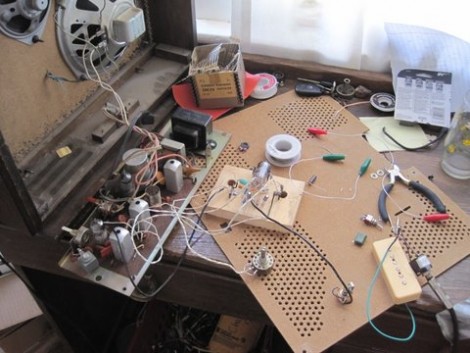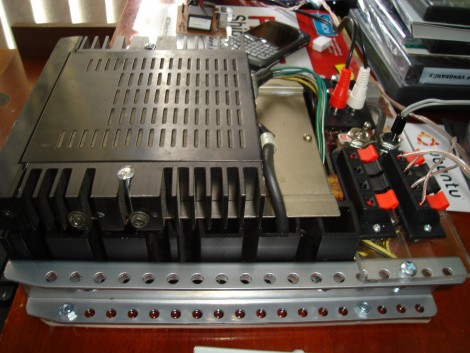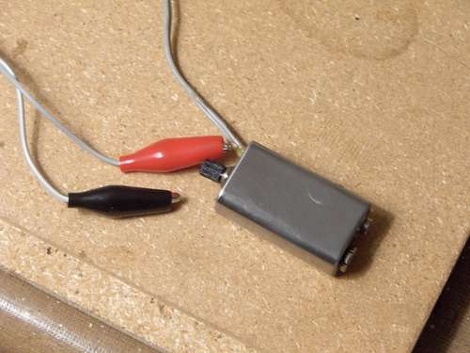
[Tristan Chambers] picked up an old speaker box some friends acquired at a yard sale. It didn’t have any inputs, and there weren’t any tuning knobs like a radio would have, so it’s a mystery what this was originally used for. [Tristan] traced out the circuit and figured out where he could input audio signals which allowed him to hook up an iPod, but it was mono and not very loud. He ended building his own vacuum tube preamp from a schematic he found on the Internet so that he could use it with an electric guitar. As the video after the break shows, the box not only puts out some pretty good sound but it’s nice and loud too.
















